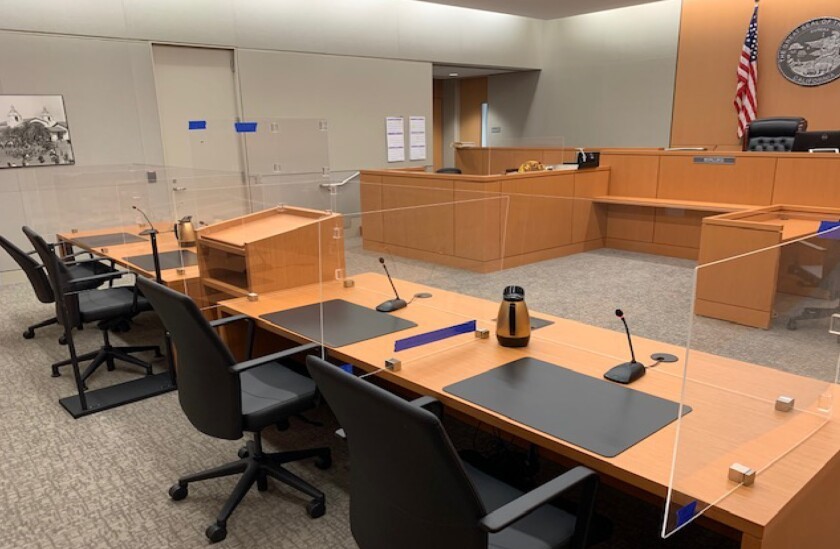

by Matthew Faust & Elias Guzman
|| 20 March 2024 ||
You may have seen recent news articles (CNN, Washington Post, and Housingwire) about big changes coming to the way residential homes are sold in the U.S.
This article will provide a little background on these articles and why they matter. First, we’ll take a look at the National Association of Realtors (“N.A.R.”) and the lawsuits that were filed. Second, we’ll discuss the concepts of “fiduciary duties” (through the lens of California) and why the N.A.R. was sued. Finally, we’ll discuss the settlement and how this can impact our country.
What and Why Lawsuits?
Talk of lawsuits rose when home sellers in Illinois & Missouri alleged in a duo of class-action lawsuits against the NAR due to their rules & MLS procedures. Given that the N.A.R. is changing its roughly 100-year-old commission structure, adjusting is bound to be nothing short of historical for the massive industry. Housingwire.com has created a timeline of the relevant lawsuits if you want to read more about each specific one.
These lawsuits allege that they [N.A.R.] are responsible for cultivating a profitable, non-competitive environment amongst realtors at the cost of the buyers & sellers. Giving way for the Anti-Trust position taken by class action plaintiffs against the NAR and its multiple listing services (MLS), 1400+ local member boards, & 1.4 million member REALTORS®. Later in the Blog, we will cover the N.A.R. policies that are under scrutiny, terms of settlement, and what it means to realtors, agencies, buyers, & sellers.
Keep an eye out for future posts about Anti-Trust Lawsuits.
What is the National Association of Realtors (NAR)?
The National Association of Realtors (“N.A.R.”) stands as one of the largest trade associations in the US, making up close to one-fifth of the National economy. The most important way that people know the N.A.R. is through their registered trademark REALTOR™. Its purpose is to establish and uphold the rules, policies, and best practices for its affiliated multiple listing services (MLS), subsidiary local associations, and its estimated 1 million-plus member REALTORS® across the nation.
Realtors or Real Estate Professionals?
Before getting too much more into the weeds on the Lawsuit, it is important to note that an individual possessing a Realtor License, does not immediately qualify them as a “Real Estate Professional,” but we will discuss this differentiation more on our Sharif | Faust Lawyers, Ltd. Blog at a later date. This matters because as you research this topic further, you may find the terms used interchangeably, however, this post is more focused on matters pertinent to Realtors, Realty Agencies, and their seller & buyer clients.
Keep an eye out for a future post about Are Realtors Real Estate Professionals? Why or Why not?
What is Fiduciary Duty?
One of the reasons that the agents were sued is that real estate agents owe fiduciary duties to their clients. In California, selling real estate agents can owe fiduciary duties to the buyers as well. In its simplest term, a fiduciary duty requires that parties treat each other will loyalty and care. “Loyalty” in this context means that the fiduciary must put their represented party’s interests above their own. “Care” means that the fiduciary’s conduct must meet minimum standards applicable to their profession. According to the lawsuits discussed here, the real estate agents were sued partly because they concealed important facts from their clients, such as their commissions. They are also alleged to have violated anti-trust laws, which is different from fiduciary duties. At Sharif | Faust we represent both sides in these transactions, which means that we can and will represent clients who believe they’ve been wronged by an agent, and we will also defend agents who have been accused of breaching their fiduciary duties.
Keep an eye out for future posts about fiduciary duties.
What was alleged against the N.A.R.?

As stated in the United States Department of Justice‘s Press Release on the matter, The plaintiffs in the class-action lawsuit alleged that the NAR policies cultivate a profitable, non-competitive environment among realtors at the expense of buyers and sellers. The following is how the plaintiffs alleged the effects of these policies.
Those policies listed were the “Commission-Concealment Rules,” “Free-Service Rule,” “Commission Filtering “, and the “Lockbox Policy.” These practices were alleged by the Plaintiffs to violate anti-trust laws and could potentially constitute a breach of fiduciary duty.
Commission-Concealment Rules
According to the D.O.J., the N.A.R. recommends that the MLSs prohibit the disclosure of possible total commission offered to buyer brokers. With almost every N.A.R.-affiliated M.L.S. adopting this policy, the realtor representing the buyer can see how much commission (s)he can make if the buyer purchases one specific property versus another while at the same time, the M.L.S.’s that adopt the N.A.R recommended policy, prohibits that disclosure of commission rates to the prospective buyer themselves.
Claiming that with this entire exchange taking place “behind closed doors,” so to speak, buyers are at a severe disadvantage with respect to trying to negotiate a lower commission rate or rebate to lower the acquisition cost of the property.
Additionally, the plaintiffs are claiming that there is an opportunity for concealed incentives for brokers to steer buyers away from similarly priced properties that, without the potential buyer’s knowledge, earn fewer commissions for the realtor.
Free-Service Rules
It was alleged that this rule allows the buyer brokers to claim that their services are free or at no cost to the buyer. The Plaintiffs argued that the N.A.R. encouraged this because the seller officially pays all realtor commissions (Buyer and Seller realtors) with their earnings. However, because the funds the buyer realtor is taking a commission on are coming from the prospective buyer client that they bring to the transaction, the plaintiffs claimed in summary that “Free Service” is not an accurate description of buyer realtor services.
Commission Filtering Rules
The Plaintiffs complained that there is a software option on the M.L.S. that enables buyer brokers to only look at homes where they make a self-directed quantity of commission. For example, the Plaintiffs alleged that a buyer realtor may filter only for properties with a 2% commission or greater.
According to the Plaintiffs, the N.A.R.’s practices are wrongful because they keep homes with a lower commission from ever being presented to a prospective buyer. The Plaintiffs further claimed that this caused the buyer’s costs, including realtor fees, to be intentionally inflated. The Plaintiffs also claimed that sellers with a lower commission for the buyer are not getting their properties sold as they would in a “fairer” marketplace.
Lockbox Policy
The Plaintiffs also alleged that the N.A.R. has a lockbox policy, which allows sellers to place the keys to their home in a lockbox so that other buyer realtors associated with the N.A.R. can show the home to potential buyers, with the seller’s consent, of course. These lockboxes use Bluetooth® “keys” to allow access to the property.
According to the lawsuits, these “keys” are only available to the NAR-associated realtor who Is also using an N.A.R.-associated M.L.S., which Plaintiffs alleged to reduce the competitive landscape by exempting non-N.A.R. realtors from participating, leaving a possible detriment to the buyer or seller.
Terms of the Settlement

According to the D.O.J., the settlement in these lawsuits will modify these practices. The N.A.R. has also trumpeted this resolution in a statement by its then-interim C.E.O., Nykia Wright when she stated:
“NAR has worked hard for years to resolve this litigation in a manner that benefits our members and American consumers. It has always been our goal to preserve consumer choice and protect our members to the greatest extent possible. This settlement achieves both of those goals.”
N.A.R.’s President at the time, Kevin Sears, echoed these sentiments:
“This will be a time of adjustment, but the fundamentals will remain: buyers and sellers will continue to have many choices when deciding to buy or sell a home, and NAR members will continue to use their skill, care, and diligence to protect the interests of their clients”.
But how will this settlement change how houses are sold in the U.S.? There are many specific details which are explained below.
What are some things that realtors and agencies will need to do differently?
Notably, nothing in the settlement contains an admission of guilt or other wrongdoing. As is fairly typical in these sorts of cases, the parties are settling to end the litigation rather than admitting that either side is right or wrong. According to the D.O.J., the settlement will result in a $ 418 million settlement payment to the Plaintiffs. It will also require N.A.R. to modify its internal procedures to operate in a more consumer-friendly manner. These changes include:
- Removing rules that interfere with an agent’s ability to specify the compensation on the portions of the M.L.S. that are viewable by consumers. Notice that this does not require that the commissions be listed there, but merely allows the agents to list the commissions.
- Disallowing agents from claiming that their services are free or available with no cost.
- Discouraging practices that agents use to filter out properties based solely upon the commission offered.
- Permit non-N.A.R. agents to utilize the lockboxes on properties listed on the M.L.S.
What does this Judgement mean for any pending private lawsuits against the NAR?
According to N.A.R.’s Chief Legal Officer, Katie Johnson, the settlement is still pending court approval at the time of this posting. She further commented that, if approved:
“The agreement would resolve claims against N.A.R., over one million N.A.R. members, all state, territorial and local REALTOR™ associations, all association-owned M.L.S.s, and all brokerages with an N.A.R. member as principal that had a residential transaction volume in 2022 of $ 2 billion or below. In addition, for nearly all brokerages that had a residential transaction volume in 2022 that exceeded $ 2 billion and for M.L.S.s not wholly owned by REALTOR™ associations, N.A.R. has secured in the agreement a mechanism for them to obtain releases efficiently if they so choose. We fought to include all members in the release but unfortunately two groups were not included. The release does not include members for any time that they were affiliated with our co-defendant HomeServices of America. The release also does not include employees of the remaining defendants named in the cases covered by this settlement.”
You can view the full statement issued by Ms. Johnson and Mr. Sears on the N.A.R.’s litigation update page.
If approved, how long will it be until the rules are officially in effect?
This settlement still needs approval from the Federal Court. Also, Julian Mark and Aaron Gregg of The Washington Post stated in their article that an individual close to the settlement stated new rules would take place in July 2024, however, this individual remained anonymous because they were not given authorization from their organization to discuss settlement matters publicly. The D.O.J. commented that the settlement will include a judgment to enforce these terms that will expire in either five or seven years, depending upon whether certain conditions are met.
What does this mean for buyers and sellers in the market?
The actual effects of the settlement won’t be known for quite some time, especially since it hasn’t been approved at the posting of this article. However, the expected benefit is that this will help reduce the increasing growth in home prices. Many observers hope that more transparency in the listing and buying process will allow homeowners to make more conscientious decisions in selling and buying homes, resulting in a more efficient marketplace. However, only time will tell whether this actually comes to pass.
More Questions?
In future posts we’ll discuss this further. If you have questions beforehand though, please check out the rest of our blog for more information. The content of this blog is provided for informational purposes only, and we are not offering any legal opinions. If you wish to consult with Sharif | Faust, please contact us to set up a consultation. This blog does not create an attorney-client relationship with Sharif | Faust. To retain Sharif | Faust, you must sign a written attorney-client agreement. Remember, the results in any case depend upon the specific facts in that case. It is important that you consult with a lawyer you trust. By reading this blog, you agree to our Terms of Use.
References
- https://www.justice.gov/opa/press-release/file/1338606/dl
- https://www.nar.realtor/newsroom/nar-reaches-agreement-to-resolve-nationwide-claims-brought-by-home-sellers
- https://www.washingtonpost.com/business/2024/03/15/nar-real-estate-commissions-settlement/
- https://www.nar.realtor/mls-online-listings/multiple-listing-service-mls-what-is-it
- https://www.nar.realtor/newsroom/nar-reaches-agreement-to-resolve-nationwide-claims-brought-by-home-sellers
- https://www.nar.realtor/videos/litigation-update-from-nar-president-kevin-sears-and-clo-katie-johnson
- https://www.housingwire.com/articles/nar-settles-commission-lawsuits-for-418-million/#:~:text=A%20class%2Daction%20lawsuit%20originally,others%20against%20NAR%20and%20brokerages.&text=DOJ%20withdraws%20from%20its%20proposed%20settlement%20agreement%20with%20NAR.&text=Judge%20rules%20original%20settlement%20terms,DOJ%20must%20comply%20with%20it.
- https://www.housingwire.com/commission-lawsuits/




